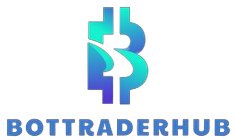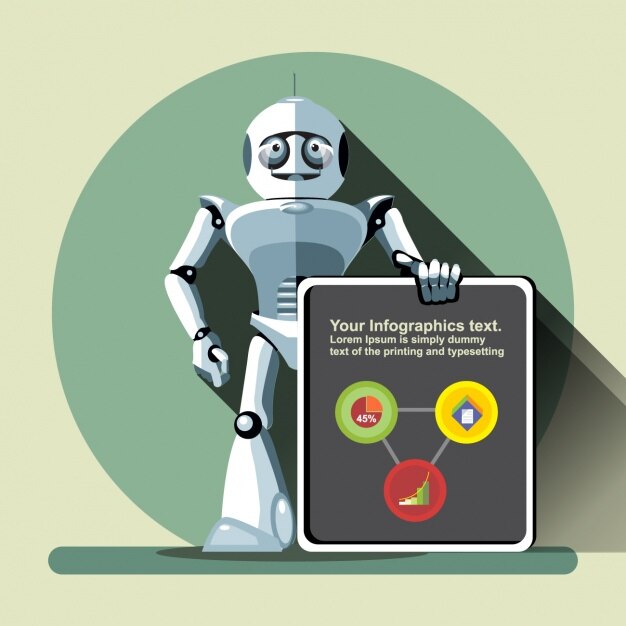The technical prowess needed to build a trading bot can seem intimidating. This article tackles the question of difficulty head-on, offering insights into the various approaches and skillsets required. Whether you’re a seasoned programmer or a curious beginner, this exploration will shed light on the feasibility of constructing your own automated trading system.
The Basics of Trading Bots
Trading bots, at their core, are software programs designed to automate the process of buying and selling financial instruments. They operate based on predefined rules and algorithms, executing trades without the need for constant manual intervention. These bots have gained popularity for their ability to analyze market data swiftly and execute trades at speeds that surpass human capabilities.
Understanding the types of trading bots is crucial for aspiring bot builders. Trend-following bots, as the name suggests, track market trends and execute trades in the direction of those trends. Arbitrage bots, on the other hand, capitalize on price differences between different exchanges, buying low and selling high to make a profit. Lastly, market-making bots enhance market liquidity by placing limit orders strategically on both sides of the order book.
Successfully building and deploying a trading bot involves a grasp of these fundamental concepts. Traders and developers need to choose the type of bot that aligns with their strategy and risk tolerance, emphasizing the importance of a well-defined plan before venturing into the world of automated trading.
Challenges in Building a Trading Bot
Building a trading bot can be a rewarding endeavor, but it comes with its fair share of challenges. Here are some key hurdles that developers often face:
- Technical Complexity:
- Choosing the right programming language is crucial. Options like Python, Java, or C++ are common, but each has its nuances and advantages.
- Data analysis and processing require handling large volumes of real-time market data efficiently.
- Market Unpredictability:
- Volatility poses a significant challenge. Developing algorithms that can handle sudden price fluctuations is essential.
- Adapting to market changes requires constant monitoring and adjustments to stay ahead of evolving trends.
- Essential Components:
- Data Feed: Ensuring a reliable data feed from various sources is critical for accurate market analysis.
- Strategy Formulation: Crafting effective trading strategies based on technical indicators, historical data, and market trends is a key component.
- Risk Management: Implementing robust risk management mechanisms is crucial to protect against significant financial losses.
- Execution System: The execution system must be fast and efficient to capitalize on trading opportunities in real-time.
- Selecting the Right Platform and Tools:
- Evaluating available trading platforms is essential. The chosen platform should align with the desired features and integrate seamlessly with the selected programming language.
- Utilizing established programming libraries and frameworks streamlines the development process and ensures reliability.
- Legal and Ethical Considerations:
- Regulatory Compliance: Adhering to various regulations governing algorithmic trading is necessary for legal and ethical reasons.
- Ethical Implications: The use of trading bots raises concerns about market manipulation and unfair advantages, necessitating ethical considerations.
- Testing and Backtesting Strategies:
- Importance of Testing: Thorough testing is essential to identify and rectify any flaws in the trading bot’s algorithms before deploying it in live markets.
- Backtesting Methods: Simulating trades using historical data helps assess the bot’s performance under different market conditions.
- Addressing Overfitting Issues: Guarding against overfitting, where a bot performs well on historical data but fails in real-world scenarios, is crucial.
Navigating these challenges requires a combination of technical expertise, strategic thinking, and a deep understanding of financial markets. Aspiring bot builders should approach the process with a comprehensive plan and a commitment to continuous learning and adaptation.
Selecting the Right Platform and Tools
Selecting the right platform and tools is crucial for the successful development and deployment of a trading bot. Consideration should be given to various factors such as features, compatibility, and community support. Here’s a breakdown of key considerations:
| Platform | Description | Key Features |
| Trading Platforms | Online platforms where trading bots operate | API availability for programmatic trading. Support for various financial instruments and markets. Reliability and uptime |
| Programming Tools | Software tools used for bot development | Programming language compatibility (e.g., Python). Libraries and frameworks for algorithm development. Backtesting capabilities |
| Data Providers | Sources of market data for analysis | Real-time data feeds. Historical data for backtesting and analysis. Data quality and accuracy |
Trading Platforms
Trading platforms serve as the foundation for deploying trading bots. Consider factors such as API availability for programmatic trading, support for various financial instruments and markets, as well as reliability and uptime.
Programming Tools
Selecting the right programming tools is essential for efficient bot development. Look for tools that are compatible with your chosen programming language, offer libraries and frameworks for algorithm development, and provide robust backtesting capabilities.
Data Providers
Reliable market data is crucial for accurate analysis and decision-making. Evaluate data providers based on the quality and accuracy of their real-time data feeds, availability of historical data for backtesting and analysis, and overall data reliability.
By carefully evaluating and selecting the appropriate platform and tools, developers can lay a solid foundation for building and deploying effective trading bots. Consideration should be given to factors such as compatibility, features, and community support to ensure the chosen tools align with the desired bot development goals.
Essential Components of a Trading Bot
Building a successful trading bot involves integrating several essential components to ensure effective functionality and performance. Here’s a closer look at each crucial element:
- Data Feed:
- Reliable data feeds from various sources are the lifeblood of a trading bot.
- Real-time market data is crucial for making timely and informed trading decisions.
- Historical data provides the basis for backtesting and refining trading strategies.
- Strategy Formulation:
- Crafting an effective trading strategy is at the core of a successful trading bot.
- Technical indicators, statistical analysis, and machine learning algorithms contribute to strategy development.
- The strategy must align with the trader’s goals, risk tolerance, and market conditions.
- Risk Management:
- Implementing robust risk management mechanisms is essential to protect against significant financial losses.
- Setting stop-loss levels, position sizing, and defining risk-reward ratios are integral components of risk management.
- Continuous monitoring and adjustment of risk parameters contribute to long-term bot success.
- Execution System:
- The execution system of a trading bot must be fast, efficient, and reliable.
- Seamless integration with the chosen trading platform ensures timely execution of trades.
- Automation of order placement and execution based on predefined criteria streamlines the trading process.
By understanding and optimizing each of these essential components, developers can create a trading bot that not only navigates market complexities but also aligns with the trader’s goals and risk tolerance. The synergy between data feeds, well-defined strategies, effective risk management, and a robust execution system forms the backbone of a successful algorithmic trading operation.
Selecting the Right Platform and Tools
Selecting the right platform and tools is a critical step in the development and deployment of a successful trading bot. It involves evaluating various factors to ensure compatibility, functionality, and community support.
Trading Platforms
When choosing a trading platform, it’s crucial to consider its API availability for programmatic trading, support for various financial instruments and markets, and overall reliability and uptime. The platform serves as the operational base for deploying trading bots, making API accessibility and market coverage essential.
Programming Tools
Programming tools play a pivotal role in the development of a trading bot. Compatibility with your chosen programming language is paramount, as is the availability of libraries and frameworks for algorithm development. Additionally, assessing the tool’s capabilities for backtesting is crucial for refining and optimizing trading strategies before deploying them in live markets.
Careful consideration of these factors ensures that the selected trading platform and programming tools align with the specific goals and requirements of the trading bot development process.

